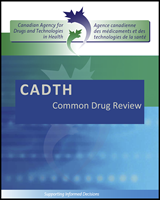Except where otherwise noted, this work is distributed under the terms of a Creative Commons Attribution-NonCommercial-NoDerivatives 4.0 International licence (CC BY-NC-ND), a copy of which is available at http://creativecommons.org/licenses/by-nc-nd/4.0/
NCBI Bookshelf. A service of the National Library of Medicine, National Institutes of Health.
Omalizumab (Xolair): Treatment of Adults and Adolescents (12 Years of Age and above) with Chronic Idiopathic Urticaria [Internet]. Ottawa (ON): Canadian Agency for Drugs and Technologies in Health; 2015 Aug.

Omalizumab (Xolair): Treatment of Adults and Adolescents (12 Years of Age and above) with Chronic Idiopathic Urticaria [Internet].
Show details2.1. Objectives
To perform a systematic review of the beneficial and harmful effects of OMA (150 mg or 300 mg subcutaneous injection every four weeks) for the treatment of CIU in adults and adolescents (12 years of age and above) who remain symptomatic despite H1 antihistamine treatment.
2.2. Methods
All trials considered pivotal by Health Canada for the CIU indication of OMA were included in the systematic review. Other studies were selected for inclusion based on the selection criteria presented in Table 3.
Table 3
Inclusion Criteria for the Systematic Review.
The literature search was performed by an information specialist using a peer-reviewed search strategy.
Published literature was identified by searching the following bibliographic databases: MEDLINE (1946–) with in-process records and daily updates through Ovid; Embase (1974–) through Ovid; and PubMed. The search strategy consisted of both controlled vocabulary, such as the National Library of Medicine’s MeSH (Medical Subject Headings), and keywords. The main search concepts were Xolair (omalizumab) and chronic idiopathic urticaria.
No filters were applied to limit the retrieval by study type. Where possible, retrieval was limited to the human population. Retrieval was not limited by publication year or by language. Conference abstracts were excluded from the search results.
The initial search was completed on December 1, 2014. Regular alerts were established to update the search until the meeting of the Canadian Drug Expert Committee on April 8, 2015. Regular search updates were performed on databases that do not provide alert services.
Grey literature (literature that is not commercially published) was identified by searching relevant websites from the following sections of the Grey Matters checklist (www.cadth.ca/en/resources/finding-evidence-is/grey-matters): Health Technology Assessment Agencies, Health Economics, Clinical Practice Guidelines, Databases (free), Internet Search, and Open Access Journals. Google and other Internet search engines were used to search for additional web-based materials. These searches were supplemented by reviewing the bibliographies of key papers and through contacts with appropriate experts. In addition, the manufacturer of the drug was contacted for information regarding unpublished studies.
Two clinical reviewers for CADTH Common Drug Review (CDR) independently selected studies for inclusion in the review based on titles and abstracts according to the predetermined protocol. Full-text articles of all citations considered potentially relevant by at least one reviewer were acquired. Reviewers independently made the final selection of studies to be included in the review, and differences were resolved through discussion. Included studies are presented in Table 4; excluded studies (with reasons) are presented in Appendix 3: Excluded Studies.
- OBJECTIVES AND METHODS - Omalizumab (Xolair)OBJECTIVES AND METHODS - Omalizumab (Xolair)
- RESULTS - Ingenol Mebutate (Picato)RESULTS - Ingenol Mebutate (Picato)
- CONCLUSIONS - Ingenol Mebutate (Picato)CONCLUSIONS - Ingenol Mebutate (Picato)
- CONCLUSIONS - Omalizumab (Xolair)CONCLUSIONS - Omalizumab (Xolair)
- Clinical Review Report - Edoxaban (Lixiana)Clinical Review Report - Edoxaban (Lixiana)
Your browsing activity is empty.
Activity recording is turned off.
See more...